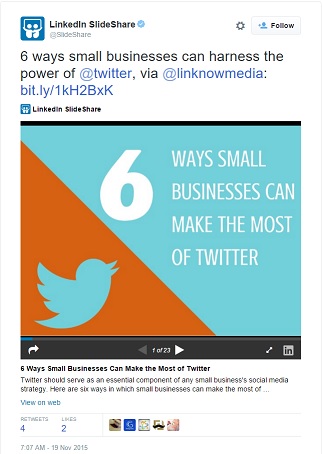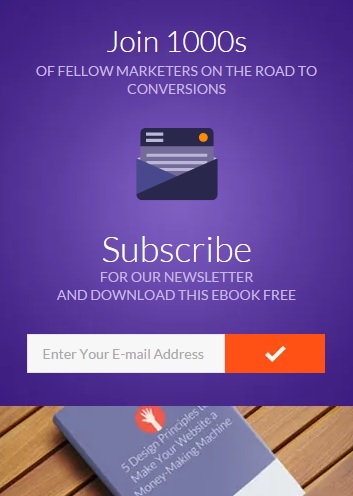
Why isn't my website working?
So you’ve been told that everyone needs to have a website, so you went out and got one to promote your small business. But now what? If you’re like most small business owners, you are wondering where to go from here.
It can be frustrating when you spend time and money building a website, and then it doesn't seem to do anything. It isn’t attracting much traffic, and it isn’t collecting leads or generating new customers for you. It’s unfortunate but true that a website is not enough on its own – however, with a little effort, you can build your website into the centerpiece of your marketing effort and turn it into a magnet that pulls in as much business as you can handle.
-
Blogging and Sharing
The single best way to attract an audience for your website, people who WANT to be there and who will become interested in your business, is to provide content they want to see. This can be in the form of photos, infographics, videos, podcasts, or any other kind of content. However, by far the most common and easiest kind of content to create is a blog.
We’ve written before about how important blogs are to attract visitors to your site, and even offered some great ideas for blog posts. But it bears repeating: regular, high quality blogging is the single best way to bring more organic traffic to your website. Sharing that blog content on Facebook, Twitter, and other social media sites helps spread it even further.
Your goal with your blog should be to provide content that gives something valuable to readers, but especially to people who would be interested in the products or services you provide. People share blog posts and articles that they think are useful, entertaining, or interesting. Every time someone shares one of your posts, that exposes dozens or hundreds of new people to your website – and the only cost was the time you took to write the blog! And if you keep making great content, you never know who might share what you've made!
The people who read your blog will also be people who are interested in your industry, and therefore exactly the type of people you want to market to. And conveniently, you already have them coming to your website, wanting to read what you have to say!
-
Collect email addresses
One of the most effective ways to reach customers in the digital age is direct email marketing. You can come straight to your customers’ inboxes with offers, tips, and pitches. While you have potential customers on your website, ask them for their email addresses so you can stay in contact with them.
Of course, you can simply ask your site visitors for their email, and some people may give it to you. However, you can achieve much better participation rates by giving them something in return for their email address. In his Hubspot article, “Why Buying Email Lists Is Always a Bad Idea (And How to Build Yours for Free,” Cory Eridon lists a series of methods you can use to collect email addresses, including giving away content or creating useful tools for your customers to use in exchange for an email addresses.
These are definitely effective methods of collecting emails, but may be overly complex for many small business owners. Fortunately, there are similar things you can do – offer your site visitors special deals or other perks in exchange for their email address. A simple message like, “Would you like 10% off your next purchase? Enter your email address to receive a coupon!” can do a lot to fill out your email list.
Once you have the emails, just make sure that you are sending them information or deals that provide them with value, otherwise you’re going to end up in their spam folder. But that’s a topic for another day.
-
Landing pages and PPC
Pay-per-click (PPC) ads are one of the single most effective way to drive traffic to your website. The most commonly used PPC service is Google’s AdWords program, in which you can pay to have your advertisement displayed as a search result for keywords that you choose. The great thing about PPC advertising is that you only need to pay Google when someone actually clicks on your ad, so it allows you to create extremely targeted ads. The only thing you need to do is make sure that when they click on your ad, they get the result they’re looking for.

Wouldn't you be disappointed if you clicked this ad and didn't land on a page with Black Friday deals?
According to this Unbounce article on Landing Pages for PPC, 80% of PPC ads are directed to an existing page on the website, like a home page or a contact page. This is a big mistake. The best way to use PPC ads is to direct people who click on them to a landing page that is designed to give the site visitor exactly what they want. If you run an ad offering a discount on landscaping, the ad should point to a page on your website with details about your discounted landscaping service, and a prominent button they can click to book an appointment.
According to all the data available, landing pages greatly increase conversion rates. And that makes sense. If your ad directs someone to a home page and they don’t see any information about the ad they clicked on, they’ll be confused, click the Back button, and you will have wasted your money. If you give them a focused landing page with exactly what the ad promised, they’ll be much more likely to convert. Consistent use of PPC ads and customized landing pages can turn your website into a huge moneymaker.
Every Little Bit Helps
Everyone wants their website to generate business for them – that’s why we all invested in websites in the first place, after all. If you are able to spend a few hours per week working on any of these ideas, you will begin to see the site visitors, customers, and money roll in.
Have you implemented any of these strategies with your own business? Have you had success with converting customers from your website? What other strategies have you used? Comment below or join the conversation with us on Twitter @linknowmedia.



